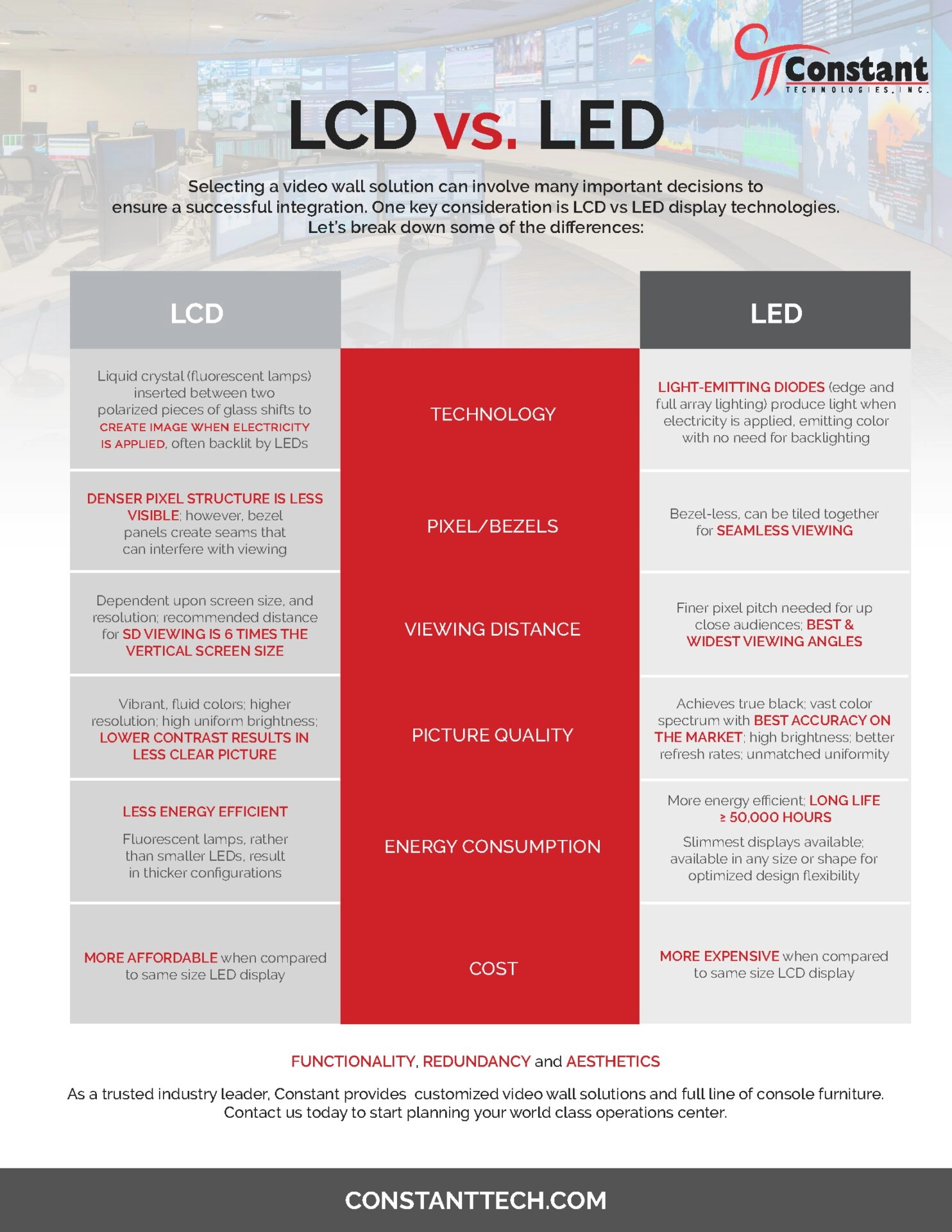LED vs LCD Video Walls: A Quick Guide
LED vs LCD
When putting together your operations center design, the video wall you choose is vital. This is where you will display important information for operators to monitor and interpret.
In mission critical projects, the display technology is key for the functionality of an entire operation. Not only should the visualization be high quality, but the technology must also be intuitive, easy to operate, and reliable for 24x7x365 use. In the crowded world of AV technologies, it can feel overwhelming to have so many options, capabilities, and vendors to consider.
The decision is not an easy one, and it’s further complicated by a key video wall decision: LED or LCD? One display technology is not necessarily better than the other; it depends on how you plan to use it. There will be one that is a better fit for your command and control application.
When making the choice between LED and LCD, it is important to consider factors such as viewing distance, picture quality, energy consumption, the visibility of pixels or bezels, and cost. For example, an LCD display will have less visible pixel structure, but has bezels that can create the appearance of seams. Meanwhile an LED display can feature bezel-less tiles for seamless viewing but is more expensive. Your priorities will dictate which is the better choice for you.
Check out this infographic below to help to break down some of the key differences between the two technologies, so you can decide which works best for your application.
Ultimately, the demands of a mission critical environment require customizable, unique solutions. What works for one command center may not work for the next. Working with an experienced integrator ensures you have expert guidance through the entire process. There are many choices you can make when it comes to your visualization technology. A specialized integrator can help you make the right one.









